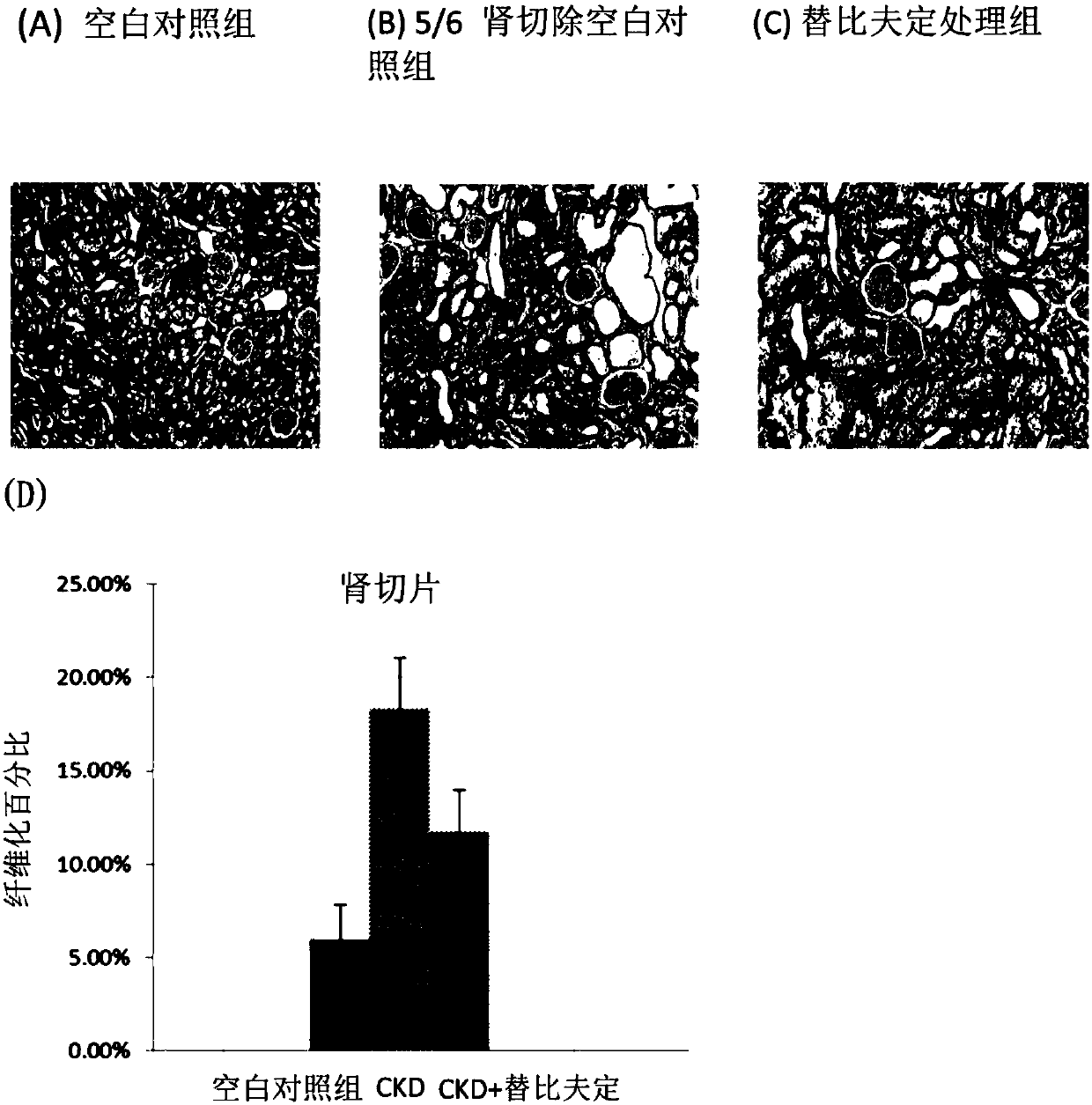Method For Improving Kidney And/Or Heart Function In Patients With Kidney Disease
A technology for heart function and patients, which can be used in pharmaceutical formulations, urinary system diseases, cardiovascular system diseases, etc., and can solve problems such as accelerated recovery
- Summary
- Abstract
- Description
- Claims
- Application Information
AI Technical Summary
Problems solved by technology
Method used
Image
Examples
Embodiment 1
[0065] Example 1 Telbivudine can effectively improve the kidney and / or heart function of CKD rats
[0066] In this embodiment, 5 / 6 nephrectomy was performed to induce renal failure in vivo, and then telbivudine was administered to evaluate the effect of telbivudine on improving renal or cardiac function in patients with renal CKD.
[0067] 5 / 6 nephrectomy is a procedure (ie, removal of one kidney and 2 / 3 of the other kidney) in experimental animals to simulate the treatment of kidney failure caused by the loss of a large amount of kidney tissue in humans. Briefly, one side of the kidney was removed from the experimental animals first, and then the remaining extreme part of the kidney (about 50% of the kidney volume) was removed within 1-2 weeks. The experimental animals treated with 5 / 6 nephrectomy were randomly divided into two groups, namely the control group and the telbivudine group. Animals in the telbivudine group were orally fed telbivudine at a dose of approximately 1...
Embodiment 2
[0077] Example 2 Telbivudine can effectively reduce the amount of uremic toxin in CKD rats
[0078] P-cresyl sulfate (p-cresyl sulfate, PCS) and indoxyl sulfate (indoxyI sulfate, IS) are uremic toxins accumulated in CKD patients, and have always been considered as the factors causing heart disease in CKD patients.
[0079] Figure 9A and Figure 9C The figures show the effects of telbivudine on the contents of IS and PCS in the serum of CKD rats, and the effects of telbivudine on the contents of free IS and PCS are shown in Figure 9B and Figure 9D middle.
[0080] The data shown in Figure 9 shows that telbivudine can effectively reduce the total amount and free amount of uremic toxins (ie, IS and PCS). Therefore, the data in this example shows that telbivudine can effectively improve the cardiac function of CKD patients by reducing the amount of uremic toxins accumulated in CKD patients.
Embodiment 3
[0081] Example 3 Telbivudine itself has no toxicity and will not affect liver function
[0082] This example discusses the effect of telbivudine on liver function.
[0083] Please refer to Figure 10 , the data show that telbivudine itself will not cause toxicity to the liver, so it includes two liver enzyme activities of alanine aminotransferase (ALT) and aspartate aminotransferase (AST). Its content is roughly the same ( Figure 10 (A) and (B)).
[0084] Taken together, the data from this study suggest that telbivudine can be used to treat patients with kidney disease (AKI or CKD) with associated kidney or heart problems.
PUM
 Login to View More
Login to View More Abstract
Description
Claims
Application Information
 Login to View More
Login to View More - R&D Engineer
- R&D Manager
- IP Professional
- Industry Leading Data Capabilities
- Powerful AI technology
- Patent DNA Extraction
Browse by: Latest US Patents, China's latest patents, Technical Efficacy Thesaurus, Application Domain, Technology Topic, Popular Technical Reports.
© 2024 PatSnap. All rights reserved.Legal|Privacy policy|Modern Slavery Act Transparency Statement|Sitemap|About US| Contact US: help@patsnap.com










